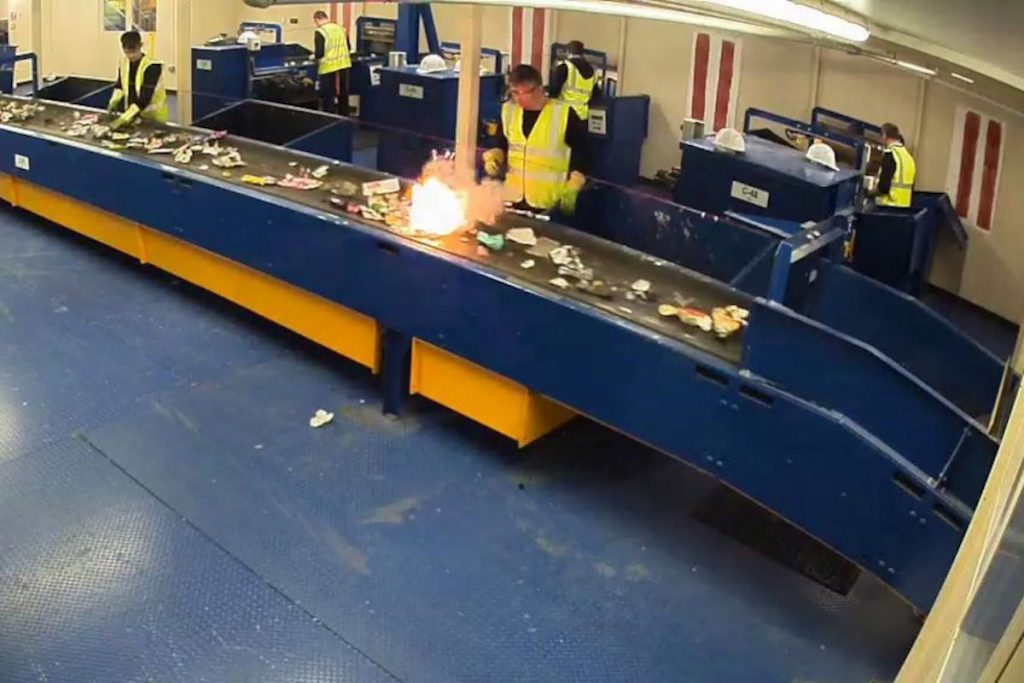Lithium-ion (Li-ion) batteries are responsible for around 48% of all waste fires occurring in the UK each year, costing some £158 million annually to waste operators, fire services and the environment, according to new research conducted by Eunomia
Li-ion batteries are found in an increasing number of electrical and electronic household items such as mobile phones and electric toothbrushes, and even items such as singing greetings cards, an issue often unknown to householders. These batteries cause a significant fire risk when they get into the residual and mixed recycling waste streams, either loose or inside electrical items. When these batteries are punctured, damaged or are exposed to high temperatures during normal waste processing and sorting operations, they can ‘go off’, setting fire to dry, flammable waste and recycling around them.
A new report produced jointly with the Environmental Services Association (ESA), entitled ‘Cutting Lithium-ion Battery Fires in the Waste Industry’, reveals that an estimated 201 waste fires caused by Li-ion batteries occur every year in the UK based on EA-reported figures, with damaging consequences for both the environment and society.
With waste fires burning for days, and sometimes even weeks and months, the environmental damage is extensive, with harmful greenhouse gas emissions released into the atmosphere and water pollution caused by run-off from extinguishing the fires. Dealing with these fires also means extra work and risk to firefighters, as well as disruption to society through rail, retail and road closures due to smoke from the fires. Waste site operators also have to deal with significant material damage, business interruption and loss of recycling resources.
This problem is only set to get worse, with more and more Li-ion batteries placed onto the market each year. Of the 670 fires recorded by ESA waste management members across the UK in 2019-20, 38% were either recorded as caused by Li-ion batteries or ‘suspected’ to have been. This is higher than the percentages recorded in the previous three years by the body (21% in 2016-17, 25% in 2017-18 and 22% in 2018-19).
To reduce these fires, the report identifies a number of solutions to get Li-ion batteries out of our waste. Suggested solutions include banning Li-ion batteries from the residual and mixed recycling waste streams, introducing a deposit return scheme (DRS) for batteries, and making battery manufacturers pay for the costs of dealing with fires their products cause.
Respondents to a survey we carried out among local authorities, fire services and waste management companies were supportive of the above measures, with 66% backing separate kerbside collections for Li-ion batteries, 65% supporting a DRS and 42% backing a ban on the disposal of these batteries in general waste.
The research was supported by a consortium of key stakeholders, including key supporters the Environment Agency (EA), the National Fire Chiefs Council (NFCC) and WISH (the Waste Industry Safety and Health Forum). The research was sponsored by waste management companies CWM Environmental Ltd, SUEZ Recycling and Recovery UK Ltd, Totus Environmental and Viridor Waste Ltd.
Commenting on the research, lead author of the report Sophie Crossette said: “The findings of this research highlight the significant financial burden Li-ion battery waste fires place on the waste sector and public sector services. To date, much of the focus on preventing waste fires has been on improved controls and infrastructure at waste sites. As this report suggests, we now need to focus on upstream interventions to divert batteries and WEEE products from the mixed waste stream to tackle this growing issue. If we don’t start to take action now, the increased use of Li-ion batteries, will only increase the cost and impact of Li-ion battery waste fires in the years to come.”

